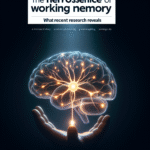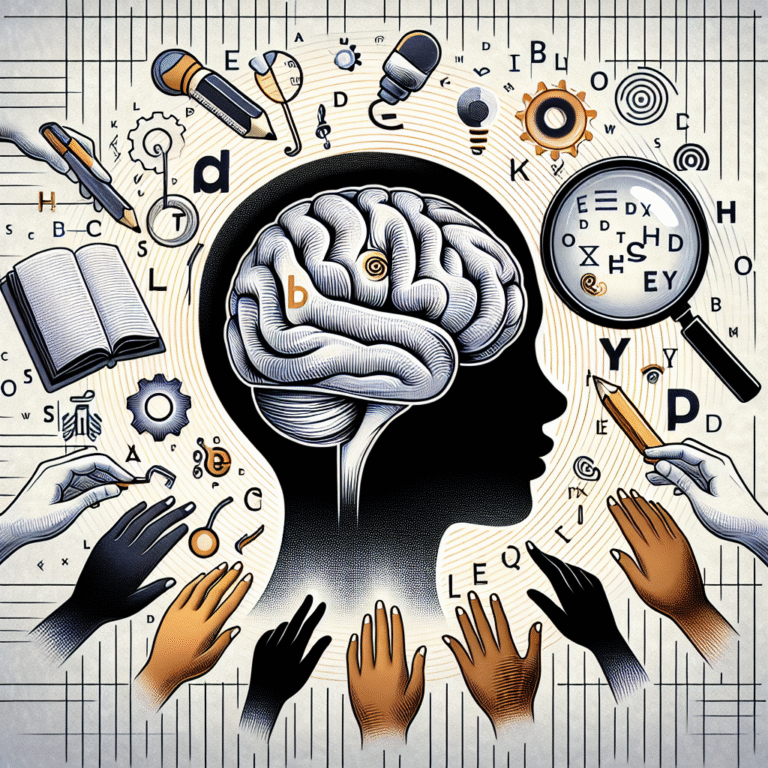
The Essential Role of Technology: Tools and Apps That Support Reading Development in Dyslexic Learners
Introduction
Imagine being a young learner filled with curiosity but constrained by written words that seem to dance on the page. For many dyslexic students, this is a daily struggle. Dyslexia affects nearly 10% of the population, creating unique challenges in reading, writing, and comprehension. However, with advancements in technology, a myriad of tools and apps have emerged that support reading development in dyslexic learners. In this article, we will explore the essential role of technology: tools and apps that support reading development in dyslexic learners, showcasing their potential to transform lives and boost academic confidence.
Understanding Dyslexia: A Brief Overview
Dyslexia is not merely a byproduct of poor teaching or lack of intelligence; it is a neurological condition that can affect anyone, regardless of background or upbringing. Often characterized by difficulties with accurate and/or fluent word recognition and by poor spelling and decoding abilities, dyslexia can lead to frustration and diminished self-esteem, particularly in the educational setting. This is where technology steps in as a game-changer, providing not just alternative pathways for learning but also leveraging individualized approaches that cater specifically to the needs of dyslexic learners.
The Power of Technology in Education
As we delve into the role of technology: tools and apps that support reading development in dyslexic learners, it’s crucial to understand technology’s wider educational impact. Technology provides:
- Personalized learning experiences through adaptive tools.
- Increased engagement with interactive content.
- Supportive feedback that fosters independence and confidence.
Research shows that students who use technology-based interventions can significantly improve their reading abilities compared to traditional methods.
Essential Tools and Apps for Dyslexic Learners
This section explores some of the most effective tools and apps available today that create a supportive environment for dyslexic learners, helping them overcome their reading challenges.
1. Text-to-Speech Software
Overview
Text-to-speech (TTS) technology converts written text into spoken words, allowing dyslexic learners to listen to the text while following along visually.
Tools
- Natural Reader
- Read&Write
- Voice Dream Reader
Case Study: Sarah’s Story
Sarah, a 10-year-old girl struggling with reading fluency, began using Voice Dream Reader. The app reads text aloud while highlighting words, enabling Sarah to grasp complex sentences that she previously found overwhelming. After several months of use, Sarah’s confidence soared, and her reading grades improved significantly.
2. Audiobooks
Overview
Listening to audiobooks allows dyslexic learners to enjoy literature without the frustration of decoding text.
Tools
- Audible
- Learning Ally
- Libby
Case Study: Jason’s Journey
Jason, a high school student, used Learning Ally to access audiobooks related to his curriculum. Instead of feeling lost in class discussions, he engaged with the material, enhancing both his comprehension and oral articulation.
3. Interactive Learning Apps
Overview
These apps often combine visual and auditory elements to create engaging learning experiences tailored for dyslexic individuals.
Tools
- Ghotit
- GEO Reading
- ABCmouse
Case Study: Emily’s Advancement
Emily struggled with letter-sound correspondence. Once she began using Ghotit, she found its interactive activities stimulating and enjoyable. The app provided immediate feedback, helping Emily develop a love for reading that she had thought was lost.
4. Mind Mapping Tools
Overview
Mind-mapping tools can help organize thoughts visually, making the process of reading and writing less daunting.
Tools
- MindMeister
- XMind
- SimpleMind
Case Study: Alex’s Transformation
Alex, who found structured writing challenging, began using MindMeister to outline his stories. This visual representation allowed him to break down complex ideas into manageable chunks, leading to clearer writing and improved comprehension.
5. Specialized Fonts and Formatting
Overview
Fonts specifically designed for dyslexics can help with letter recognition and reading speed.
Tools
- Dyslexie Font
- OpenDyslexic
Case Study: Maria’s Experience
Maria noticed that switching to OpenDyslexic font on her e-reader allowed her to read more comfortably. The unique letter shapes reduced confusion, enhancing both her reading speed and comprehension.
Comparison Table of Tools
| Tool/App | Primary Function | Unique Features | Best For |
|---|---|---|---|
| Natural Reader | Text-to-Speech | Natural-sounding voices | Students who prefer auditory learning |
| Learning Ally | Audiobooks | Extensive library | Students with severe reading challenges |
| Ghotit | Interactive Activities | Real-time spelling and grammar checks | Early readers and writers |
| MindMeister | Mind Mapping | Visual organization | Students needing structure |
| Dyslexie Font | Specialized Font | Eases visual decoding | All reading levels |
The Benefits of Technology for Dyslexic Learners
The integration of technology into reading instruction for dyslexic learners offers numerous benefits:
- Increased Independence: Students can access materials at their own pace.
- Reduced Anxiety: Less frustration leads to a more positive learning environment.
- Improved Engagement: Interactive features keep students interested and committed to learning.
- Real-Time Feedback: Many apps and tools provide instant responses, enabling learners to identify mistakes and correct them immediately.
Best Practices for Implementing Technology
To fully capitalize on the role of technology: tools and apps that support reading development in dyslexic learners, educators and parents should consider the following best practices:
- Personalization: Customize technology to fit individual student needs and preferences.
- Training: Ensure that both students and educators are trained to use technology effectively.
- Monitoring Progress: Regularly assess the impact of these tools on reading development.
- Creating a Supportive Environment: Foster a learning atmosphere that encourages the use of technology without stigma.
Conclusion
The role of technology: tools and apps that support reading development in dyslexic learners has not only changed the landscape of education but has also transformed lives. By leveraging the right tools, students can overcome challenges, build confidence, and achieve academic success.
As technology continues to evolve, the possibilities for supporting dyslexic learners will only expand. Parents and educators are encouraged to embrace these tools and foster an environment where every child can thrive.
FAQs
1. What is dyslexia?
Dyslexia is a learning disorder characterized by difficulty in reading due to problems identifying speech sounds, decoding, and encoding.
2. How can technology help dyslexic learners?
Technology offers tools such as text-to-speech software, audiobooks, and interactive apps that make reading more accessible and enjoyable for dyslexic learners.
3. Are there specific apps that are better for younger children?
Yes, apps like ABCmouse focus on early literacy skills and use engaging formats conducive to younger learners.
4. Do I need specialized training to use these tools?
While many tools are user-friendly, some degree of training can enhance effectiveness, especially when used in an educational setting.
5. How can dyslexic learners benefit from audiobooks?
Audiobooks allow learners to access literature without the frustration of decoding text, improving comprehension and exposure to vocabulary.
6. What steps should I take if my child struggles with reading?
Consult with an educational therapist or specialist who can assess your child’s needs and recommend appropriate tools and strategies.
This article endeavors to empower parents, educators, and dyslexic learners themselves with insights into how technology can be a bridge to effective reading engagement. From text-to-speech apps to customized learning tools, the potential is vast. Embracing these resources can create transformative experiences—engaging minds and igniting passions for reading.
















